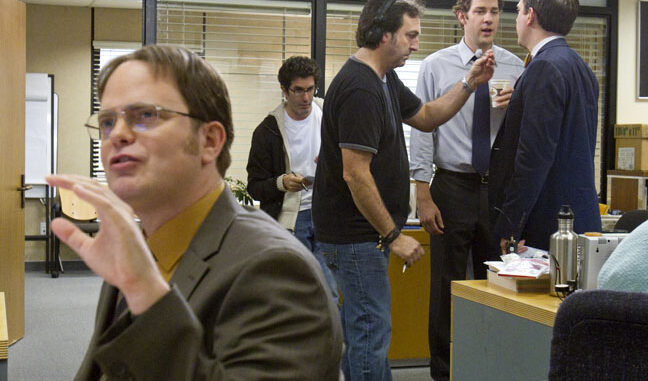
The Unseen Symphony: What Happened Behind the Camera vs What You Saw on TV
The flickering screen is a modern altar, a window into worlds real and imagined. We settle onto our couches, remotes in hand, ready to be informed, entertained, or transported. What we see is a meticulously crafted narrative: a perfectly seared steak, a seamless news report, an unscripted reality show confrontation, or a breathtaking movie sequence. It flows, it impresses, it convinces. Yet, beneath this glossy veneer lies a swirling vortex of chaos, improvisation, human error, and sheer painstaking effort – a world entirely different from the polished product beamed into our homes. The chasm between what happened behind the camera and what you saw on TV is not just a gap; it's a testament to illusion, artistry, and the tireless pursuit of a flawless mirage.
Consider the seemingly effortless perfection of a gourmet cooking show. On screen, the celebrity chef glides through a pristine kitchen, effortlessly chopping, sautéing, and plating a dish that looks like a work of art. The aromas practically waft through the screen, the colors pop, and the final presentation is flawless. What the viewer doesn't see is the army of food stylists meticulously arranging every herb and drizzle with tweezers, the multiple takes for a single shot of a perfectly flipped pancake, or the frantic last-minute replacement of a burnt ingredient. Behind the camera, the "pristine" kitchen might be littered with discarded attempts, the chef sweating under hot lights, and a team of assistants pre-chopping, pre-baking, and even entirely pre-cooking identical versions of the dish at various stages so the on-camera magic can appear to happen in real-time. The "quick whip-up" of a soufflé might actually involve an hour of preparation and three failed attempts before the cameras even roll, culminating in a pristine, pre-baked version swapped in for the final reveal. What you saw was culinary magic; what happened was a carefully orchestrated illusion, a ballet of controlled chaos designed to deceive the palate through the eye.
Or take the high-stakes drama of "reality" television. On screen, a contestant has an explosive argument, a tearful confession, or a moment of seemingly spontaneous triumph. The drama feels raw, unscripted, almost voyeuristic. What you didn't see was the producer whispering prompts into an earpiece, the endless hours of "frankenbiting" – stitching together disparate words and phrases from various takes to create entirely new sentences – or the strategically placed alcohol designed to lower inhibitions and ignite conflict. Behind the camera, the "unscripted" moments are often meticulously planned scenarios, the "spontaneous" reactions elicited through repeated provocations, and the "real" relationships distorted by the lens of narrative necessity. The camera crew might wait for hours for a specific breakdown, while editors comb through hundreds of hours of mundane footage to extract a few seconds of compelling "drama." The fight you witnessed was not just captured; it was curated, molded, and intensified, transforming genuine human interaction into a caricature for entertainment value.
Even in the realm of live news, where authenticity is paramount, the gap persists. A field reporter, poised and articulate, delivers a breaking story amidst a chaotic backdrop – a natural disaster, a protest, a crime scene. Their voice is calm, their facts precise, their demeanor unshakeable. What you didn't see was the frantic producer in their ear, relaying last-second updates, the cameraman battling wind and rain to keep the shot steady, or the reporter themselves having just received a terrifying piece of information seconds before going live. The "smooth transition" from studio to field might involve a technical glitch that almost took the broadcast off air, or a last-minute decision to cut to commercial because the live feed suddenly froze. Behind the camera, the apparent calm is often a thin veneer over a constant scramble, a triumph of human resilience and technical prowess in the face of unpredictable elements. Every clear image, every steady voice, every fluid transition is the result of dozens of unseen individuals making split-second decisions and solving crises that the viewer will never know existed.
The profound difference between what happens behind the camera and what ultimately graces our screens is not, fundamentally, a deception, but rather a testament to the transformative power of media production. It is the invisible army of technicians, writers, directors, editors, and countless support staff who meticulously sculpt reality, compress time, amplify emotion, and polish every rough edge. They work in a world of controlled chaos, long hours, and relentless pressure, all to conjure the seamless, compelling narratives we consume. Understanding this unseen symphony doesn't diminish the magic; it enhances it. It transforms our passive viewership into an appreciation for the immense artistry, the technical wizardry, and the sheer human effort required to turn raw reality into the captivating illusion we call television. The next time you watch, remember the untold story unfolding just beyond the frame – the true narrative of creation.
